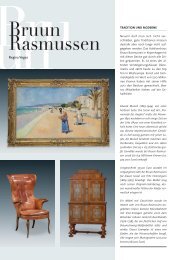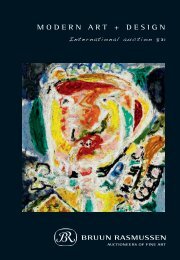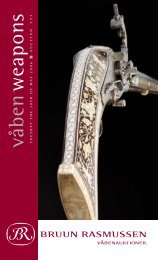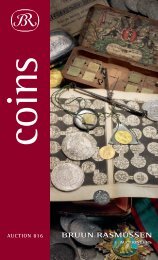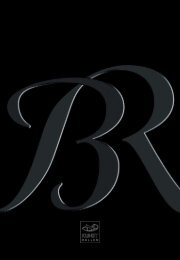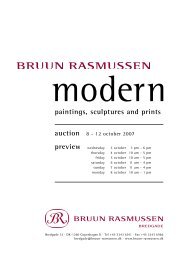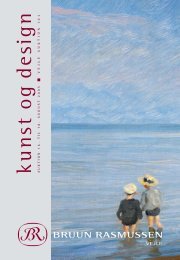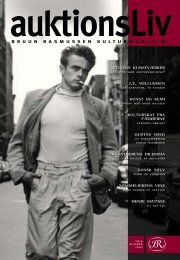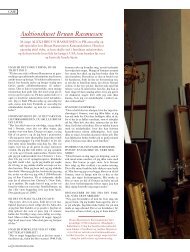Create successful ePaper yourself
Turn your PDF publications into a flip-book with our unique Google optimized e-Paper software.
Johan Rohde – The Unity of Art<br />
By Gertrud Hvidbjerg-Hansen and Gertrud Oelsner<br />
Last year marked the 150th anniversary of Johan<br />
Rohde’s birth, but the scope and coherence of his<br />
comprehensive production of paintings, furniture,<br />
silver and book-craft has remained largely unknown,<br />
even though Rohde was arguably one of the most<br />
crucial figures in Danish art, applied art and art<br />
criticism around the turn of the previous century.<br />
applied art<br />
Whereas modern art moved in new directions, Johan<br />
Rohde (1856-1935) maintained his artistic idiom in<br />
the first years of the 20th century. Even if Rohde’s<br />
paintings were out of step with modern art, they constituted an important basis for his work within<br />
handicrafts – an aspect that is often overlooked, because the renewal in his art after the turn of the<br />
century is found in the design of e.g. silver and furniture. Rohde’s contribution to the advancement<br />
of Danish handicrafts is truly impressive.<br />
The collections at The Danish Museum of Art and Design contain hundreds of drawings with<br />
sketches for everything from key bows, monograms, decorative patterns, flowerpots, lamps, curtain<br />
rods for complete interiors – even fountains and sepulchral monuments. The same goes for his sketches<br />
for silverworks, including jewellery, writing sets, cutlery and watches along with decorations for<br />
book covers. In addition to these, there are all the elaborate pencil and watercolour drawings for<br />
the same items that are often works of art in their own right.<br />
Johan Rohde began to design furniture in 1897 and was soon quite successful, especially following<br />
the World’s Fair in Paris in 1900 at which several specimens of his furniture were represented. Rohde’s<br />
furniture is an interesting expression of the encounter with a number of ancient, classical and<br />
Japanese stylistic features, reflected in the design of details, the use of exotic species of timber and in<br />
a select craftsmanship brought to complete perfection – including the decorative intarsia works.<br />
Gertrud Hvidberg-Hansen is keeper at Odense City Museums, and along with Gertrud Oelsner, keeper at<br />
Storstrøm Art Museum, she organised last year’s Rohde exhibition, ”ARS UNA” (The Unity of Art), at Funen<br />
Art Museum. For this exhibition they issued a publication on Rohde and his work under this very title. The<br />
exhibition, from which a number of items are now offered for sale, was later presented at the Bröhan-<br />
Museum in Berlin.<br />
<strong>Bruun</strong> <strong>Rasmussen</strong>’s international auction no <strong>776</strong> consists of two catalogues, the first part with<br />
paintings and the second part with applied art. Works by Johan Rohde from the collection of his<br />
son, the late H.P. Rohde, will be represented in both catalogues.<br />
Johan Rohde: "Selvportræt" (c. 1890). Den Hirschsprungske Samling.<br />
Johan Rohdes hus tegnet i 1919



